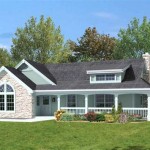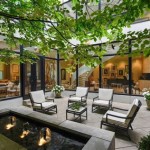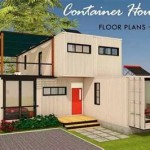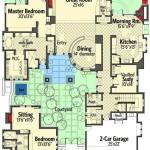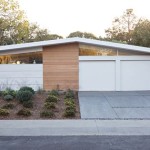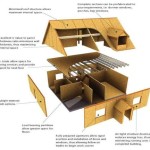Georgian House Plans define architectural designs inspired by the Georgian style prevalent in Great Britain from the early 18th century until the early 19th century. These plans encapsulate the characteristics of this esteemed architectural style, emphasizing symmetry, proportion, and classical details. A prime example of a Georgian house plan is the renowned Wentworth Woodhouse in Yorkshire, England, which showcases the grandeur and timeless elegance of this architectural era.
Georgian House Plans serve as blueprints for constructing homes that embody the architectural heritage of the Georgian period. They provide detailed specifications for every aspect of the building, including room layouts, exterior elevations, and interior finishes. By adhering to these plans, homeowners and architects can recreate the distinctive features and charm of Georgian architecture in modern-day residential constructions.
Georgian House Plans encompass a set of architectural principles that define the Georgian style.
- Symmetrical Facade
- Central Entrance
- Classical Details
- Formal Room Arrangement
- Large Windows
- Red Brick or Stucco Exterior
- Hipped Roof
- Palladian Windows
- Elaborate Doorways
- Grand Staircases
These elements contribute to the distinctive character and timeless appeal of Georgian architecture.
Symmetrical Facade
A hallmark of Georgian House Plans is their symmetrical facade, characterized by a balanced and orderly arrangement of architectural elements on both sides of a central axis. This symmetry creates a sense of harmony and grandeur, enhancing the aesthetic appeal of the building.
The central entrance, typically marked by an elaborate doorway with a pediment or architrave, serves as the focal point of the symmetrical facade. Windows are arranged symmetrically on either side of the entrance, with their sizes and proportions carefully balanced to maintain the overall symmetry. The number of windows on each floor is often even, further emphasizing the symmetrical design.
In addition to windows, other architectural features such as pilasters, columns, and cornices are also arranged symmetrically. These elements add depth and interest to the facade, while reinforcing the sense of balance and order. The roofline typically follows the symmetrical theme, with a hipped roof or a gambrel roof featuring symmetrical slopes on both sides.
The symmetrical facade of Georgian House Plans not only enhances the aesthetic appeal of the building but also serves a practical purpose. It allows for a more efficient use of space within the home, as rooms can be arranged symmetrically around a central hallway or staircase. This symmetrical arrangement also facilitates natural light penetration, creating a bright and airy interior.
Central Entrance
The central entrance of Georgian House Plans is a defining feature that adds grandeur and symmetry to the facade. It typically consists of an elaborate doorway with a pediment or architrave, flanked by windows on either side. The doorway serves as a focal point, inviting guests into the home and creating a sense of anticipation.
Georgian doorways are often adorned with intricate details, such as pilasters, columns, and cornices. These elements add depth and character to the entrance, while reinforcing the symmetrical design of the facade. The doorway may also feature a transom window above the door, allowing for natural light to enter the hallway.
In addition to its aesthetic appeal, the central entrance of Georgian House Plans also serves a practical purpose. It provides a clear and central point of entry into the home, allowing for easy access to the main rooms on the ground floor. The symmetrical arrangement of the windows on either side of the entrance ensures that the hallway is well-lit and welcoming.
Overall, the central entrance of Georgian House Plans is a key architectural element that contributes to the overall grandeur and symmetry of the design. It not only enhances the aesthetic appeal of the facade but also provides a practical and inviting entryway into the home.
In addition to the aforementioned details, here are some other notable characteristics of the central entrance in Georgian House Plans:
- The doorway is often raised above the ground level, accessed by a few steps.
- The doorway may be framed by a portico or porch, supported by columns or pilasters.
- The door itself is typically made of wood and may feature decorative panels or carvings.
- The central entrance often leads into a grand hallway or foyer, which provides access to the main rooms on the ground floor.
Classical Details
Georgian House Plans incorporate an array of classical details that reflect the architectural heritage of the Georgian period. These details add a sense of sophistication and refinement to the overall design, evoking the grandeur of ancient Greek and Roman architecture.
- Pediments
Pediments are triangular gables that often crown doorways, windows, and porticos. They add a classical touch to the facade and can be adorned with intricate carvings or sculptures.
- Columns and Pilasters
Columns and pilasters are vertical supports that add a sense of grandeur and symmetry to the facade. They can be Doric, Ionic, or Corinthian in style, each with its own distinctive characteristics.
- Cornices
Cornices are horizontal moldings that run along the top of walls or above windows and doors. They add a decorative touch and help to define the different sections of the facade.
- Palladian Windows
Palladian windows are large, multi-part windows that are often used in the center of the facade. They consist of a large central window flanked by two smaller windows, creating a graceful and symmetrical composition.
In addition to these key elements, Georgian House Plans may also incorporate other classical details such as arches, niches, and urns. These elements add to the overall grandeur and sophistication of the design, creating a timeless appeal that has endured for centuries.
Formal Room Arrangement
Georgian House Plans are characterized by a formal and symmetrical arrangement of rooms. The layout is designed to create a sense of order and hierarchy, with each room serving a specific purpose and contributing to the overall flow of the home.
The ground floor typically consists of a central hallway or foyer that leads to the main reception rooms. These rooms are often arranged in a symmetrical fashion on either side of the hallway, with the drawing room or parlor on one side and the dining room on the other. The drawing room is typically the largest and most formal room in the house, used for entertaining guests and special occasions. The dining room is designed for formal dining and is often located near the kitchen for convenience.
The upper floors of a Georgian House Plan typically contain the bedrooms and private chambers. The master bedroom is usually the largest and most elaborate bedroom, often with an attached dressing room or sitting room. Other bedrooms are arranged symmetrically on either side of the hallway and may vary in size and Ausstattung. The upper floors may also include additional rooms such as a library, study, or nursery.
The formal room arrangement of Georgian House Plans reflects the social hierarchy and customs of the Georgian period. The reception rooms were designed to impress guests and showcase the wealth and status of the homeowner. The private chambers, on the other hand, were designed for comfort and privacy. The symmetrical arrangement of the rooms not only enhances the aesthetic appeal of the home but also facilitates efficient movement and interaction between the different spaces.
Large Windows
Georgian House Plans are characterized by large windows that provide ample natural light and create a sense of spaciousness. The windows are typically double-hung sash windows, which consist of two movable sashes that slide up and down to open and close. This type of window allows for maximum ventilation and flexibility in controlling the amount of light and air entering the room.
- Abundant Natural Light
The large windows in Georgian House Plans allow for an abundance of natural light to flood the interior spaces. This creates a bright and airy atmosphere, making the rooms feel more spacious and inviting. The natural light also reduces the need for artificial lighting, saving energy and creating a more comfortable living environment.
- Enhanced Views
The large windows also provide expansive views of the surrounding landscape. This connection to the outdoors enhances the overall aesthetic appeal of the home and creates a sense of harmony between the interior and exterior spaces. The views can also be carefully framed to capture specific vistas or create a sense of privacy.
- Improved Ventilation
The double-hung sash windows in Georgian House Plans facilitate excellent ventilation. By opening both the top and bottom sashes, homeowners can create a cross-breeze that circulates fresh air throughout the rooms. This helps to regulate temperature, reduce humidity, and improve the overall air quality within the home.
- Architectural Detail
In addition to their functional benefits, the large windows in Georgian House Plans also contribute to the overall architectural detail of the home. The windows are often framed by elaborate moldings and cornices, adding a touch of sophistication and elegance to the facade. The symmetrical arrangement of the windows further enhances the aesthetic appeal, creating a sense of balance and proportion.
Overall, the large windows in Georgian House Plans serve both functional and aesthetic purposes. They provide ample natural light, enhance views, improve ventilation, and add architectural detail to the home. These windows are an integral part of the Georgian architectural style and contribute to the timeless appeal of Georgian House Plans.
Red Brick or Stucco Exterior
Georgian House Plans typically feature either a red brick or stucco exterior. Both materials contribute to the distinctive character and timeless appeal of Georgian architecture, offering unique advantages and aesthetic qualities.
Red Brick Exterior
Red brick is a classic material that has been used in Georgian architecture for centuries. It creates a warm and inviting facade, adding a sense of historical charm to the home. Red brick is also a durable and low-maintenance material, making it a practical choice for exterior construction. The bricks are typically laid in a Flemish bond pattern, which creates a visually appealing and structurally sound wall.
Stucco Exterior
Stucco is a type of plaster that is applied to the exterior walls of a home. It creates a smooth and elegant finish that can be painted in a variety of colors. Stucco is a versatile material that can be molded into various shapes and textures, allowing for decorative details and architectural flourishes. It is also relatively low-maintenance and can withstand harsh weather conditions.
Aesthetic Considerations
The choice between a red brick or stucco exterior depends on personal preferences and the desired architectural style. Red brick is a traditional choice that evokes a sense of warmth and historical charm. Stucco, on the other hand, offers a more formal and elegant appearance, with the ability to be customized with different colors and textures.
Practical Considerations
Both red brick and stucco are durable materials that require minimal maintenance. Red brick is a more porous material, so it may require occasional sealing to protect it from moisture penetration. Stucco, on the other hand, is less porous and is naturally resistant to moisture damage. However, it may require periodic repainting to maintain its appearance.
Hipped Roof
A hipped roof is a type of roof where all four sides slope downwards to meet the walls, forming a hip at each corner. This type of roof is commonly associated with Georgian House Plans and contributes to the distinctive architectural style.
Hipped roofs offer several advantages over other types of roofs. They are more structurally sound and can better withstand high winds and heavy snow loads. The sloping sides also provide better drainage, preventing water from pooling and causing leaks. Additionally, hipped roofs create more usable attic space compared to other roof types.
In Georgian House Plans, hipped roofs are often combined with other architectural elements to create a harmonious and visually appealing design. For example, the hipped roof may be topped with a central cupola or widow’s walk, adding a touch of elegance and grandeur to the home. The roof may also feature dormer windows, which provide additional light and ventilation to the attic space.
Overall, the hipped roof is an integral part of Georgian House Plans, contributing to the structural integrity, aesthetic appeal, and functionality of the home. Its sloping sides, hip corners, and potential for additional architectural elements create a timeless and distinctive architectural style.
Here are some additional details about hipped roofs in Georgian House Plans:
- The hipped roof is typically symmetrical, with all four sides sloping at the same angle.
- The hips are often accentuated with decorative moldings or cornices.
- The roof may be covered with a variety of materials, such as slate, tile, or metal.
- Hipped roofs can be designed with varying degrees of pitch, from shallow to steep.
Palladian Windows
Palladian windows are a distinctive type of window that originated in the Italian Renaissance period and became a prominent feature in Georgian architecture. They are characterized by their large size and symmetrical composition, consisting of a central window flanked by two smaller windows on either side.
- Abundant Natural Light
Palladian windows allow for maximum natural light to enter a room. The large central window and the two smaller flanking windows create a wide opening that floods the space with daylight. This abundance of natural light creates a bright and airy atmosphere, making the room feel more spacious and inviting.
- Architectural Detail
Palladian windows are not only functional but also highly decorative. The symmetrical arrangement of the windows and the elaborate moldings and cornices that often surround them add a touch of grandeur and sophistication to the facade of a Georgian house. The windows can be further enhanced with pediments, columns, and other classical details.
- Focal Point
Due to their size and architectural significance, Palladian windows often serve as a focal point on the facade of a Georgian house. They are typically placed in the center of the facade, above the main entrance, or in prominent positions on the upper floors. Their symmetrical composition and elaborate detailing draw the eye and create a sense of balance and harmony.
- Historical Significance
Palladian windows have a rich historical significance, dating back to the Italian Renaissance period. They were popularized by the architect Andrea Palladio, who used them extensively in his designs. In Georgian architecture, Palladian windows became a symbol of status and wealth, as they were often featured in grand mansions and public buildings.
Overall, Palladian windows are an iconic architectural element that adds a touch of elegance, grandeur, and historical significance to Georgian House Plans. Their large size, symmetrical composition, and elaborate detailing make them a distinctive and highly desirable feature in Georgian architecture.
Elaborate Doorways
Elaborate doorways are a hallmark of Georgian House Plans, adding a touch of grandeur and architectural significance to the home. These doorways are typically characterized by their symmetrical design, classical details, and decorative elements.
- Symmetrical Design
Georgian doorways are designed with a strong emphasis on symmetry. The doorway is typically centered on the facade of the house, with balanced elements on either side. This symmetry creates a sense of order and harmony, enhancing the overall aesthetic appeal of the home.
- Classical Details
Georgian doorways often incorporate classical architectural details, such as columns, pilasters, and pediments. These elements add a touch of sophistication and elegance to the doorway. The columns or pilasters may be Doric, Ionic, or Corinthian in style, each with its own distinctive characteristics.
- Decorative Elements
Elaborate doorways in Georgian House Plans are often adorned with decorative elements, such as carvings, moldings, and cornices. These elements add depth and interest to the doorway, creating a visually appealing focal point. The carvings may depict intricate patterns, foliage, or even human figures, showcasing the craftsmanship and artistic skills of the era.
- Grand Scale
Georgian doorways are typically grand in scale, with a height and width that create a sense of importance and grandeur. The large size of the doorway not only makes it an impressive architectural feature but also allows for easy access to the home. The grand scale of the doorway is often complemented by a sweeping staircase or a spacious hallway, further enhancing the sense of opulence.
Overall, elaborate doorways are an essential element of Georgian House Plans, contributing to the overall grandeur, architectural significance, and aesthetic appeal of the home. Their symmetrical design, classical details, decorative elements, and grand scale create a lasting impression and reflect the sophistication and elegance of the Georgian era.
Grand Staircases
Grand staircases are a defining feature of Georgian House Plans, adding a touch of elegance and architectural drama to the home. These staircases are typically located in the central hallway or foyer and serve as a grand and formal transition between the different floors of the house.
The design of grand staircases in Georgian House Plans is characterized by several key elements:
- Monumental Scale
Georgian staircases are typically grand in scale, with a sweeping curve and a height that creates a sense of grandeur and importance. The monumental scale of the staircase not only makes it an impressive architectural feature but also allows for a comfortable and graceful ascent between floors. - Symmetry
Symmetry is a key principle in Georgian architecture, and it is reflected in the design of grand staircases. The stairs are typically arranged symmetrically around a central axis, with balanced elements on either side. This symmetry creates a sense of order and harmony, enhancing the overall aesthetic appeal of the staircase. - Classical Details
Grand staircases in Georgian House Plans often incorporate classical architectural details, such as columns, pilasters, and balustrades. These elements add a touch of sophistication and elegance to the staircase. The columns or pilasters may be Doric, Ionic, or Corinthian in style, each with its own distinctive characteristics. - Decorative Elements
Georgian staircases are often adorned with decorative elements, such as carvings, moldings, and wrought ironwork. These elements add depth and interest to the staircase, creating a visually appealing focal point. The carvings may depict intricate patterns, foliage, or even human figures, showcasing the craftsmanship and artistic skills of the era.
In addition to their aesthetic appeal, grand staircases in Georgian House Plans also serve a practical purpose. They provide a convenient and efficient means of moving between the different floors of the house. The wide, shallow steps and sturdy construction ensure a safe and comfortable ascent and descent.
Overall, grand staircases are an integral part of Georgian House Plans, contributing to the overall grandeur, architectural significance, and functionality of the home. Their monumental scale, symmetry, classical details, decorative elements, and practical purpose make them a defining feature of Georgian architecture.










Related Posts


